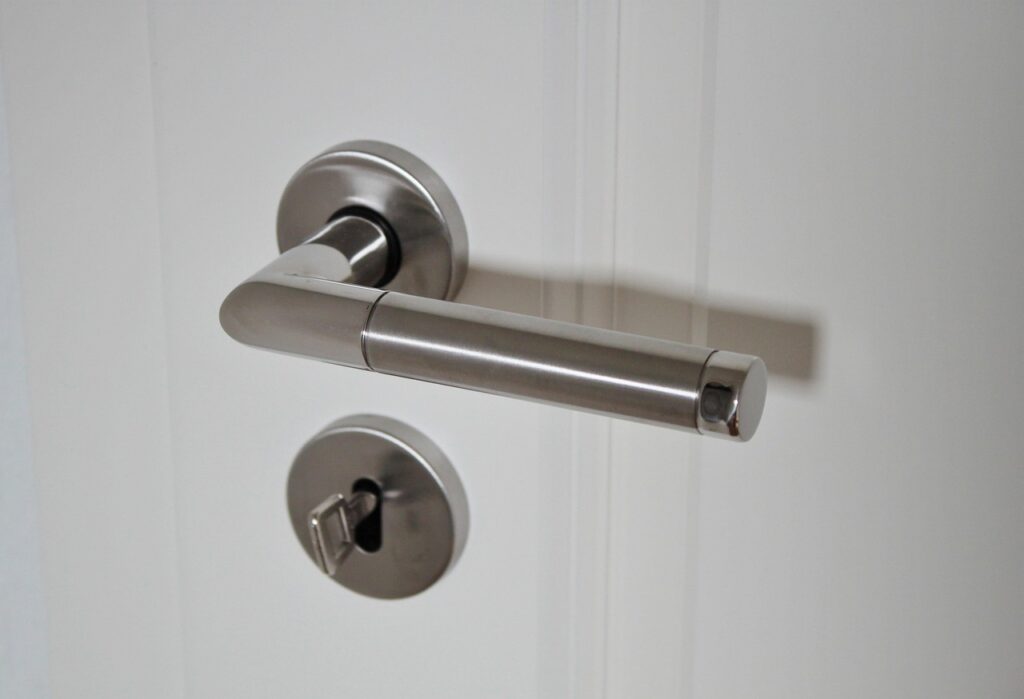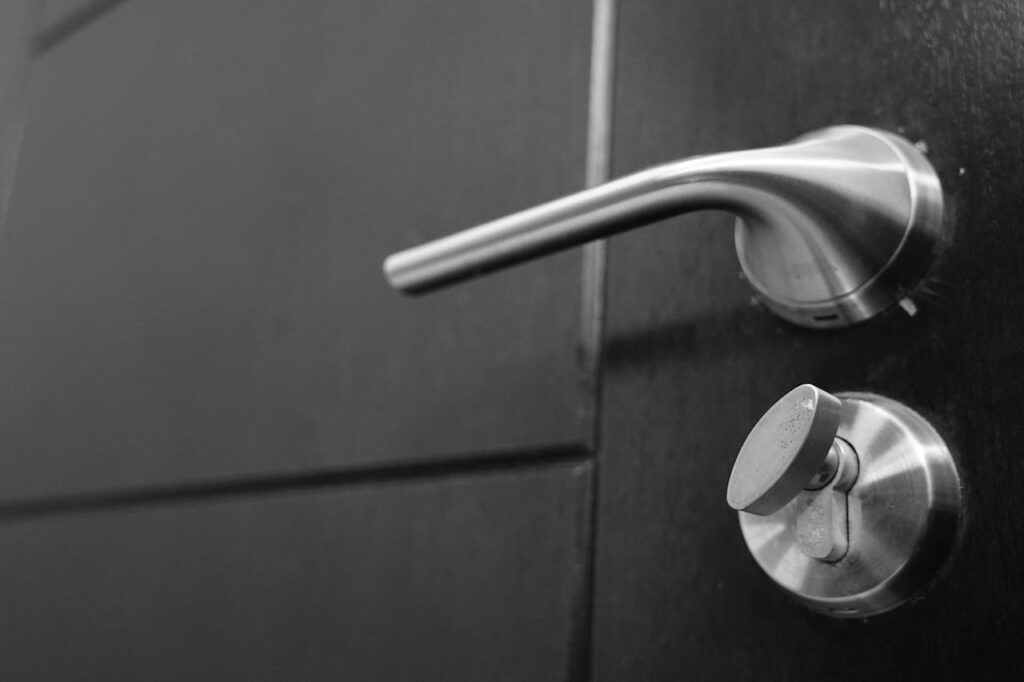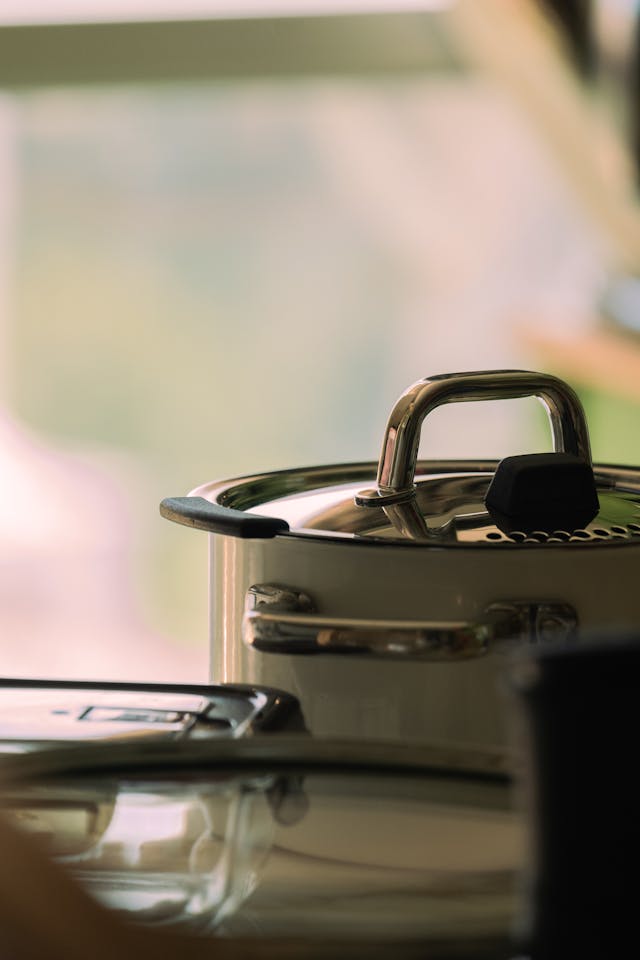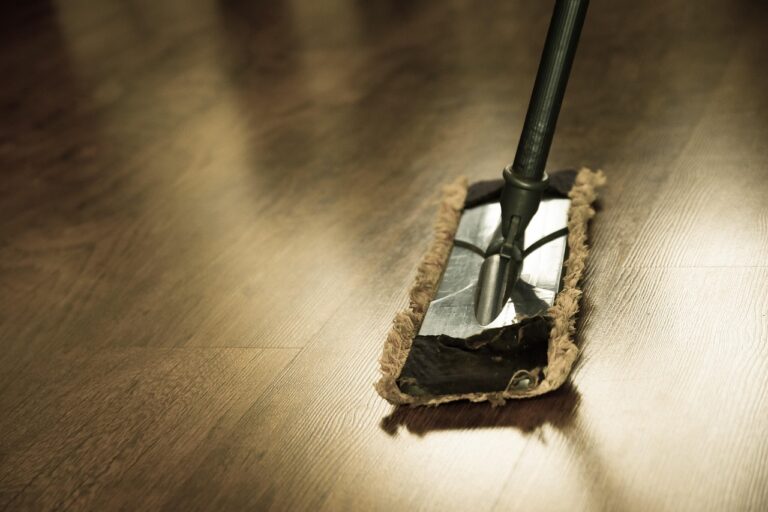Doorknobs and handles get touched frequently throughout the day, collecting fingerprints, grime, and germs along the way. They’re one of the most used surfaces in your home, but they’re often overlooked during regular cleaning routines. Let’s walk through how to get them sparkling clean and keep them that way.

Why Clean Doorknobs Matter
Doorknobs harbor bacteria and viruses that spread from hand to hand. Regular cleaning helps reduce that transfer and keeps your home feeling fresher.
Clean handles also look better. Smudges and buildup dull the finish over time, making even nice hardware look neglected.
1. Start With the Right Supplies
You don’t need specialty products for this job. Most doorknobs clean up nicely with simple household items.
Grab a microfiber cloth, warm water, and mild dish soap. For tougher grime, white vinegar or rubbing alcohol works well. Microfiber cloths are gentle enough for all finishes and won’t leave scratches behind.
Avoid abrasive scrubbers or harsh chemicals like bleach. They can damage the finish, especially on brass or bronze hardware.
2. Identify Your Hardware Type
Different metals need different care. Brass, stainless steel, bronze, and painted finishes all react differently to cleaners.
Check if your hardware has a coating. Many modern doorknobs have a protective lacquer that shouldn’t be scrubbed too hard. Coated finishes need gentler treatment than raw metal.
If you’re unsure what type of metal it is, start with the mildest cleaning method first. You can always step it up if needed.
3. Dust Before You Wipe
A quick dusting removes loose dirt and prevents scratching during the wet clean. Use a dry microfiber cloth or a small brush to get into crevices.
Pay attention to the base where the handle meets the door. Dust and debris collect in these tight spots.
This step takes a few seconds but makes the actual cleaning much more effective.
4. Clean Stainless Steel and Chrome

Mix a few drops of dish soap with warm water. Dampen your cloth and wipe down the entire surface, following the grain if there is one.
Stainless steel looks best when buffed dry immediately after cleaning. Water spots show up easily on these finishes, so don’t skip the drying step.
For stubborn smudges, dampen a cloth with rubbing alcohol. It cuts through oils from hands without leaving residue.
5. Care for Brass and Bronze
Real brass and bronze develop a natural patina over time. Some people like that aged look, while others prefer a polished shine.
For light cleaning, stick with soapy water and a soft cloth. This maintains the patina without stripping it away. Avoid acidic cleaners unless you want to remove the patina entirely.
If you do want to polish, use a brass cleaner made for the job. Apply it gently with a soft cloth, then rinse and dry thoroughly.
6. Handle Painted or Coated Finishes
Painted doorknobs and handles need extra care. Harsh scrubbing can chip or dull the coating.
Dampen a cloth with soapy water and gently wipe the surface. Don’t soak the hardware or let water sit too long. Excess moisture can seep under the finish and cause peeling.
Dry immediately with a clean cloth. If paint is already chipping, consider repainting or replacing the hardware.
7. Disinfect High-Touch Areas
After cleaning, a quick disinfecting wipe helps kill lingering germs. Use a disinfectant spray or wipe designed for surfaces, or make your own with diluted rubbing alcohol.
Spray onto a cloth rather than directly on the hardware. This prevents drips into the door mechanism.
Let it air dry, or wipe with a clean cloth after 30 seconds. This step is especially useful during cold and flu season.
8. Don’t Forget the Latch and Plate
The strike plate and latch get dirty too. Wipe them down with the same cloth and cleaner you used on the handle.
Dirt can build up in the latch mechanism and cause it to stick. A quick wipe prevents this and keeps doors opening smoothly.
Check for any loose screws while you’re at it. Tightening them takes a second and saves future headaches.
9. Clean the Area Around the Handle
Oils and grime from hands often transfer to the door surface near the handle. Wipe a few inches around the hardware to get rid of smudges.
This makes the whole door look cleaner, not just the handle. It’s a small detail that makes a noticeable difference.
Use the same gentle cleaner you used on the hardware to avoid mismatched finishes.
10. Set a Cleaning Routine
Doorknobs don’t need daily attention, but regular wipes keep them from getting grimy. Aim for a quick clean once a week, or more often in high-traffic areas.
A weekly routine takes less time than scrubbing built-up grime later. Keep a microfiber cloth handy so you can wipe handles as part of your regular tidying.
For less-used doors, once a month works fine. Adjust based on how much traffic each door gets.
What to Avoid
Skip the all-purpose cleaners with bleach or ammonia. They can corrode metal finishes and cause discoloration over time.
Don’t use steel wool or rough sponges. Even if the grime is stubborn, abrasive tools leave scratches that are hard to fix.
Avoid soaking hardware or spraying cleaners directly onto door mechanisms. Moisture in the latch can cause rust or make the lock stick.
Conclusion
Clean doorknobs and handles take just a few minutes but make your home feel fresher and more polished. With the right approach for each finish, you can keep hardware looking great without damage.




